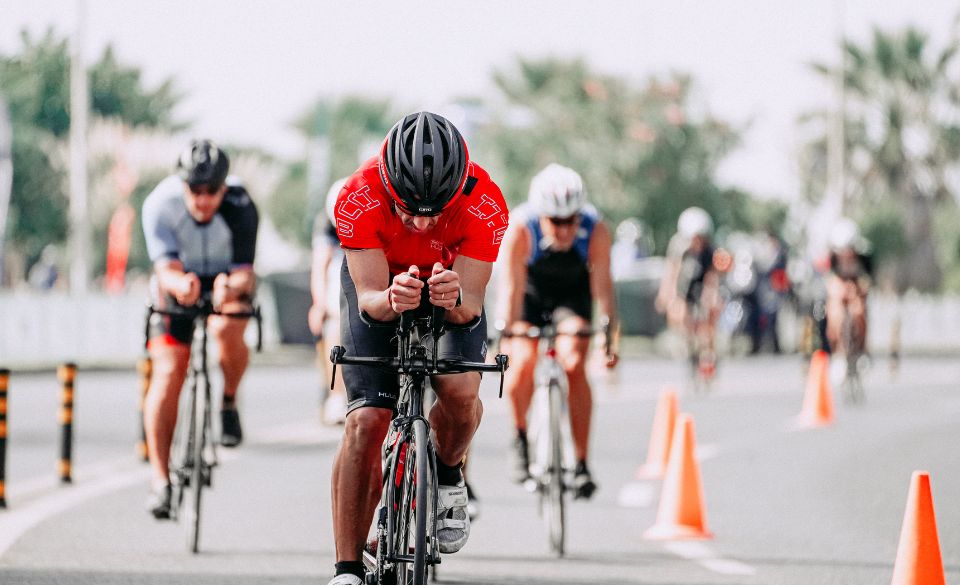
Olympic Triathlon Training Plan Advanced: Tips for Peak Performance
As one of the most demanding endurance events in the world, the Olympic triathlon requires a high level of fitness, skill, and mental toughness. To succeed in this grueling competition, athletes must follow a strict training plan that includes swimming, cycling, and running. In this article, we will outline an advanced Olympic triathlon training plan, designed for experienced triathletes who are looking to improve their performance and achieve their personal best.
Set Your Goals and Plan Your Schedule
Before starting any training program, it is important to establish your goals and plan your schedule accordingly. Decide on your target time and identify your strengths and weaknesses. Create a training schedule that works for you, taking into account your work, family, and other commitments. Ensure that you have enough time to rest and recover, as overtraining can lead to injury and burnout.
Focus on Endurance Training
The Olympic triathlon requires a high level of endurance, as athletes must swim 1.5 km, cycle 40 km, and run 10 km without stopping. To build your endurance, include long, steady-state training sessions in your training plan. This could include a weekly long run, a long bike ride, or a long swim. Aim to increase your training volume gradually over time, but avoid overtraining.
Incorporate High-Intensity Interval Training
In addition to endurance training, high-intensity interval training (HIIT) can help you improve your speed and power. HIIT involves short bursts of intense exercise, followed by a period of rest. This type of training can be done on the bike, in the pool, or on the track. For example, you could do 30-second sprints on the bike, followed by 30 seconds of recovery, repeating for several sets.
Include Strength Training
Strength training is often overlooked in triathlon training, but it can help you build power and prevent injury. Focus on exercises that target the muscles used in swimming, cycling, and running, such as squats, lunges, and pull-ups. Incorporate strength training into your routine 2-3 times per week, but be careful not to overdo it, as too much strength training can lead to muscle fatigue and slow recovery.
Practice Transitions
In the Olympic triathlon, transitions can make a big difference in your overall time. Practice transitioning between the swim, bike, and run as part of your training plan. Set up a mock transition area in your backyard or at the gym and practice taking off your wetsuit, putting on your cycling shoes, and changing into your running shoes. Aim to make your transitions as smooth and efficient as possible.
Fuel Your Body
Proper nutrition is essential for triathlon training. Ensure that you are consuming enough calories to fuel your workouts and recover properly. Focus on high-quality carbohydrates, such as whole grains, fruits, and vegetables, as well as lean protein and healthy fats. Stay hydrated by drinking plenty of water and electrolyte-rich sports drinks.
Advanced Olympic Triathlon Training Plan Sample Layout
Week 1:
Monday: Swim – 2 km steady state
Tuesday: Bike – 1 hour tempo ride with intervals
Wednesday: Run – 10 km steady state
Thursday: Swim – 1 km warm-up, 8x50m sprints, 1 km cool-down
Friday: Rest day
Saturday: Bike – 2-hour endurance ride
Sunday: Run – 15 km steady state
Week 2:
Monday: Swim – 2 km steady state
Tuesday: Bike – 1 hour tempo ride with intervals
Wednesday: Run – 12 km steady state with hill repeats
Thursday: Swim – 1 km warm-up, 4x200m sprints, 1 km cool-down
Friday: Rest day
Saturday: Bike – 3-hour endurance ride
Sunday: Run – 18 km steady state
Week 3:
Monday: Swim – 2 km steady state
Tuesday: Bike – 1 hour tempo ride with intervals
Wednesday: Run – 15 km steady state with hill repeats
Thursday: Swim – 1 km warm-up, 8x50m sprints, 1 km cool-down
Friday: Rest day
Saturday: Bike – 2-hour endurance ride with hill repeats
Sunday: Run – 20 km steady state
Week 4:
Monday: Swim – 2 km steady state
Tuesday: Bike – 1 hour tempo ride with intervals
Wednesday: Run – 12 km steady state with hill repeats
Thursday: Swim – 1 km warm-up, 4x200m sprints, 1 km cool-down
Friday: Rest day
Saturday: Bike – 3-hour endurance ride
Sunday: Run – 18 km steady state
Note: This is just a sample layout, and the actual training plan should be customized based on individual goals, fitness level, and schedule. It is also important to include rest days and recovery periods to prevent overtraining and injuries.
Conclusion
An advanced Olympic triathlon training plan requires dedication, discipline, and hard work. By focusing on endurance training, incorporating high-intensity interval training, strength training, practicing transitions, and fueling your body with the right nutrition, you can improve your performance and achieve your personal best. Remember to listen to your body, rest when necessary, and stay motivated by setting achievable goals and tracking your progress.



